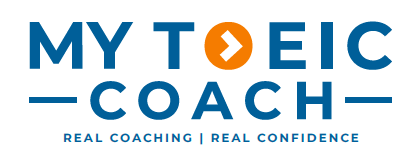🗣️ TOEIC Part 3: Conversations – 20 Tips to Boost Your Listening Score
Want a higher TOEIC Listening score?
In TOEIC Listening Part 3, you’ll hear short conversations between two or three people.
Your job: catch the key points, follow the flow, and answer three questions for each conversation.
With the right habits, this section can go from overwhelming to predictable.
1 – Know the Format
13 conversations in total.
3 questions per conversation → 39 questions total.
Sometimes there’s a graphic (chart, schedule, map).
No repeats — you hear it once.
2 – Prepare Before the Audio Starts
Skim the three questions quickly — they tell you what to listen for.
The first sentence often reveals the topic.
Focus on key ideas (who, what, why), not every word.
3 – Follow the Flow
Listen for transition words (“however,” “actually,” “so”) — they signal changes.
Track who is speaking (customer, staff, coworkers).
Recognise question types: main idea, detail, inference.
Use elimination — cut obviously wrong choices fast.
4 – Lock on to Key Info
Who / What / Why — most questions fit these patterns.
Time & place — very common test points.
Listen for problems, goals, or next steps.
“What’s next?” is a frequent question.
5 – Think in Real Situations
Topics: meetings, travel, customer service, scheduling.
Tone matters — confused, frustrated, excited.
Watch for similar-sounding words (reservation vs. presentation).
Use any visuals to confirm answers.
Get comfortable with different accents — US, UK, Australian, Canadian.
6 – Practice for Speed
Never leave blanks — guess if needed.
Train at real test speed — don’t slow the audio.
Listen 2–3 times in practice, but always first at full speed.
You don’t need to hear every word — just enough to understand the situation and the logic.
Stay calm, listen for structure, and use the questions as a guide.
For more strategies and resources to strengthen your Listening skills, visit the English Library Collection and sharpen your Part 3 skills before test day.

